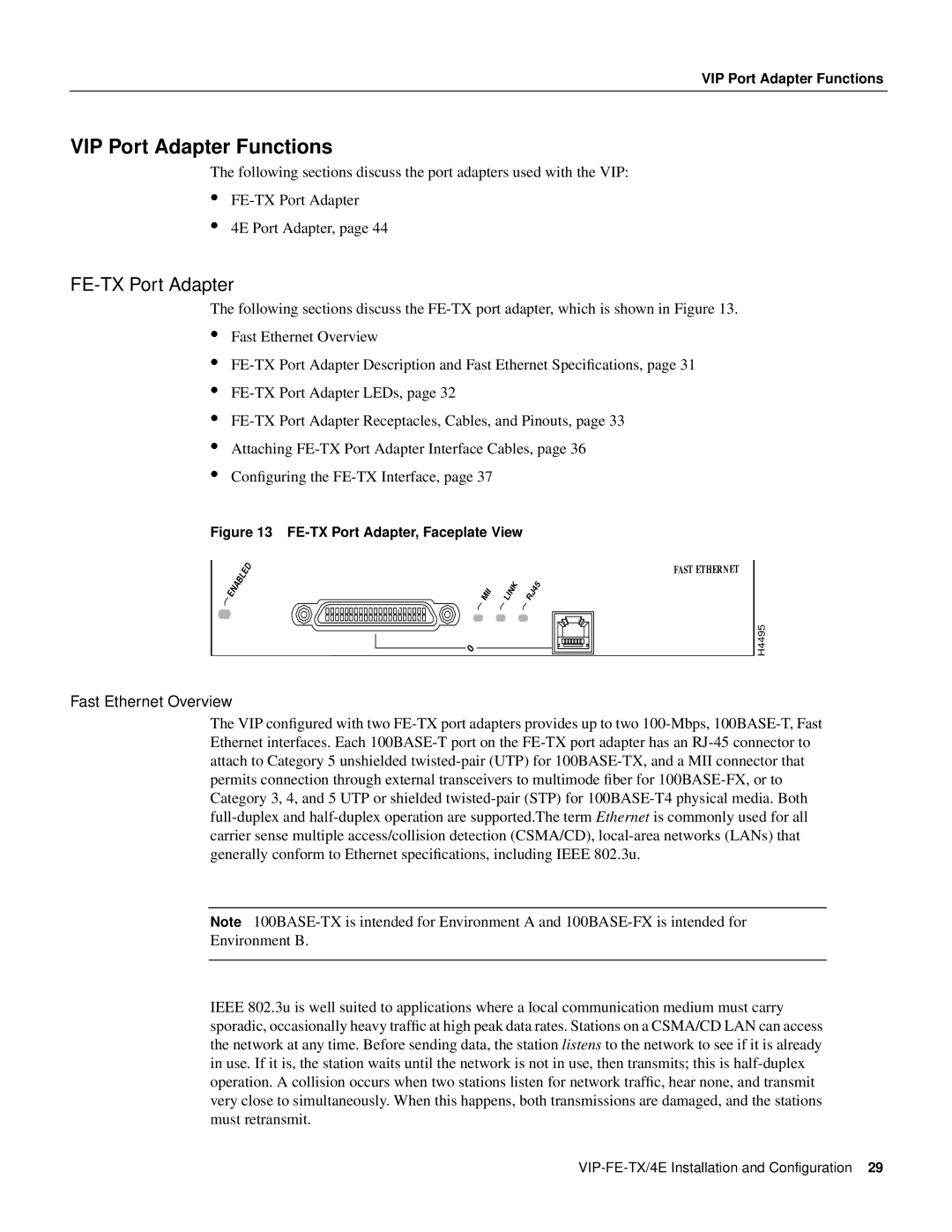VIP Port Adapter Functions
VIP Port Adapter Functions
The following sections discuss the port adapters used with the VIP:
FE-TX Port Adapter
4E Port Adapter, page 44
FE-TX Port Adapter
The following sections discuss the FE-TX port adapter, which is shown in Figure 13.
Fast Ethernet Overview
FE-TX Port Adapter Description and Fast Ethernet Specifications, page 31
FE-TX Port Adapter LEDs, page 32
FE-TX Port Adapter Receptacles, Cables, and Pinouts, page 33
Attaching FE-TX Port Adapter Interface Cables, page 36
Configuring the FE-TX Interface, page 37
Figure 13 FE-TX Port Adapter, Faceplate View
0
Fast Ethernet Overview
The VIP configured with two FE-TX port adapters provides up to two 100-Mbps, 100BASE-T, Fast Ethernet interfaces. Each 100BASE-T port on the FE-TX port adapter has an RJ-45 connector to attach to Category 5 unshielded twisted-pair (UTP) for 100BASE-TX, and a MII connector that permits connection through external transceivers to multimode fiber for 100BASE-FX, or to Category 3, 4, and 5 UTP or shielded twisted-pair (STP) for 100BASE-T4 physical media. Both full-duplex and half-duplex operation are supported.The term Ethernet is commonly used for all carrier sense multiple access/collision detection (CSMA/CD), local-area networks (LANs) that generally conform to Ethernet specifications, including IEEE 802.3u.
Note 100BASE-TX is intended for Environment A and 100BASE-FX is intended for
Environment B.
IEEE 802.3u is well suited to applications where a local communication medium must carry sporadic, occasionally heavy traffic at high peak data rates. Stations on a CSMA/CD LAN can access the network at any time. Before sending data, the station listens to the network to see if it is already in use. If it is, the station waits until the network is not in use, then transmits; this is half-duplex operation. A collision occurs when two stations listen for network traffic, hear none, and transmit very close to simultaneously. When this happens, both transmissions are damaged, and the stations must retransmit.
VIP-FE-TX/4E Installation and Configuration 29

